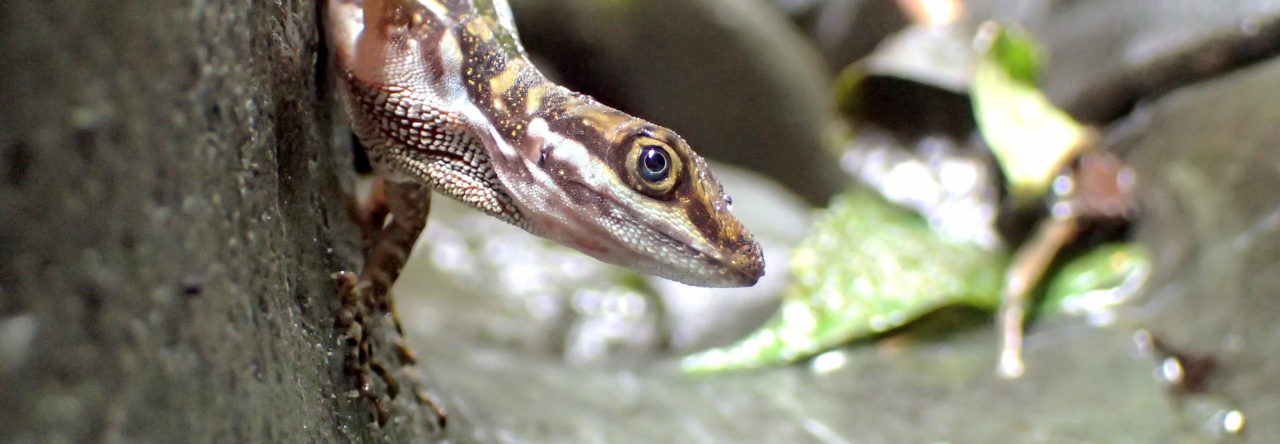Guadeloupe is composed of two islands whose shape is that of a butterfly and that were joined together in 1806 by the wooden Union Bridge and then the Gabarre Bridge in 1929:
- Situated to the west, Basse-Terre has an area of 848 km2. This is a volcanic mountain whose summit is the Soufriere, located at 1467m altitude. It is covered with a dense rainforest with many rivers and waterfalls.
- Situated to the east, Grande-Terre has an area of 586 km2. The substrate is limestone and consists of a plain bordered by a mangrove forest in the southwest, an irregular succession of hills called “les Grands Fonds” in the center and an arid plateau of rocky coasts in the north.
The species of endemic Anolis of Guadeloupe is called Anolis marmoratus, with reference to the orange marbling on the head of the specimens described by Dumeril and Bibron in 1837. In fact, Anolis marmoratus is a species which has 6 subspecies of Guadeloupe and six others on the islands around (La Désirade, Petite Terre, Marie Galante, Les Saintes, Les ilets Pigeons, Les Ilets Kahouanne, les Ilets Fajous).
Regarding Anolis marmoratus of Guadeloupe, the subspecies are:
Anolis marmoratus marmoratus, which Lazell in 1962, noted as “the most beautiful anole he never saw.” It lives around Capesterre, at the southeast of Basse-terre. Adult male are apple-green, shading to blue on the tail and yellow-green on the limbs. The head, the neck and the orbital area are marbled with orange, the throat fan orange-yellow with yellow scales. Preliminary work we have conducted suggests that it could be classified as a trunk-ground ecomorph.
Anolis marmoratus girafus that lives along the west coast of Basse-Terre in the driest area of this island.



















